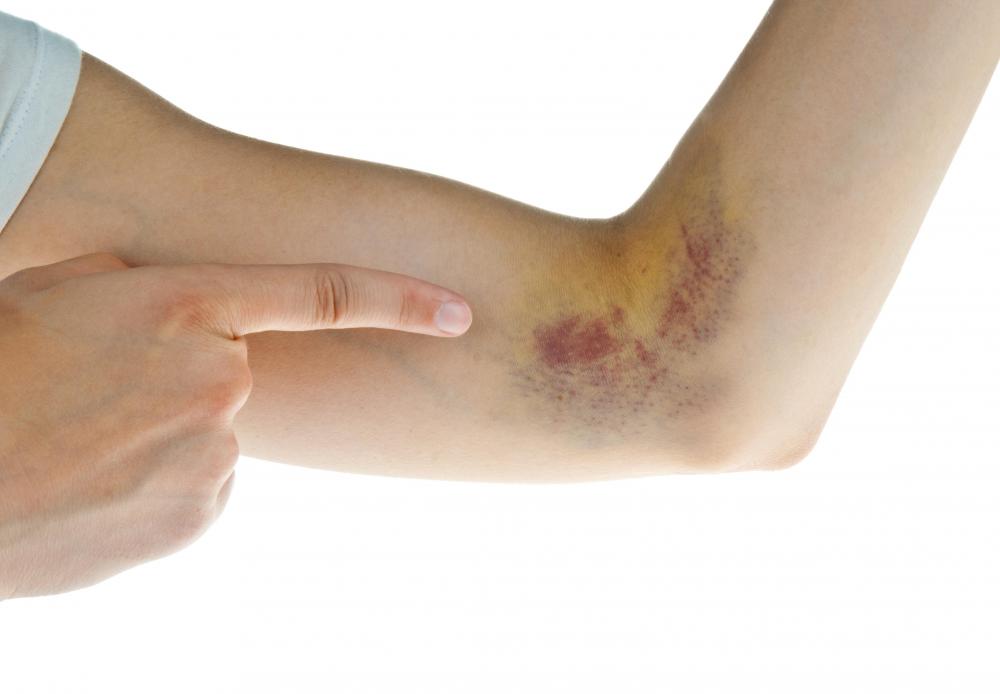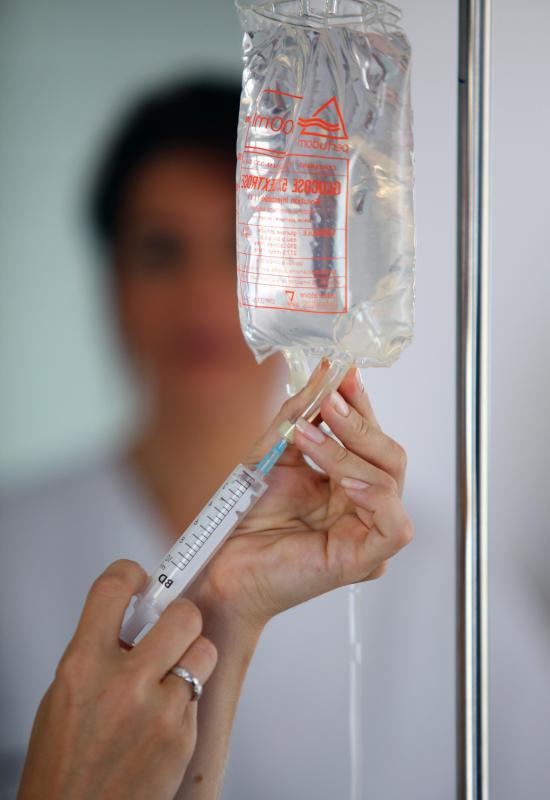At TheHealthBoard, we're committed to delivering accurate, trustworthy information. Our expert-authored content is rigorously fact-checked and sourced from credible authorities. Discover how we uphold the highest standards in providing you with reliable knowledge.
What are the Most Common Intravenous Complications?
Common intravenous complications are those problems that can sometimes arise when a thin tube known as a catheter is inserted into a vein. An intravenous catheter, or IV catheter, may be required for some medical treatments. It may also be used when administering a blood transfusion, for example, for intravenous feeding when patients are unable to eat normally, and for introducing fluids into the body to restore the balance of fluids and electrolytes. Complications may occur if the catheter is positioned incorrectly or becomes dislodged from the vein, causing fluid or blood to leak into the tissues. Other common complications include infection and thrombophlebitis, where a damaged vein becomes inflamed and a blood clot forms.
When a catheter ends up in the wrong place during insertion or when the tube later cuts out of the vein or becomes completely dislodged, fluid or medication can leak into the tissues can result. Usually, a firm swelling can be seen, and sometimes redness. Action needs to be taken quickly in cases where an intravenous infusion is poisonous to tissues, as is the case for most chemotherapy treatments. The catheter is removed after drawing as much fluid back as possible with a syringe. An antidote may be injected near the affected area or placed on the skin, and hot and cold packs may be applied.

If a catheter accidentally goes straight through a vein and out the other side, or sometimes if pressure is not applied firmly when a catheter is removed, blood may leak out and build up in the tissues to form a swelling known as a hematoma. Usually, a hematoma is one of the more easily treated intravenous complications, and it should resolve in a couple of weeks without any treatment. Sometimes a catheter is inserted into an artery by mistake, in which case blood that is bright red will pump back up the tube, requiring removal of the catheter and application of pressure to stop the bleeding.

Infections associated with IV therapy usually lead to pain, redness, heat, and swelling, and they are generally treated by removing the catheter and giving antibiotics. Keeping the area and equipment clean when inserting a catheter helps to prevent infection. In thrombophlebitis, the characteristic damage to the vein wall, with associated inflammation and clotting, is more likely to occur when catheters are left in place for a long time or when an intravenous infusion causes irritation. The inflamed vein often stands out from the skin like a thick red cord. Treatment consists of removing the catheter and elevating the affected body part while warm compresses are applied, with antibiotics being administered if there is an associated infection.
AS FEATURED ON:
AS FEATURED ON:















Discuss this Article
Post your comments